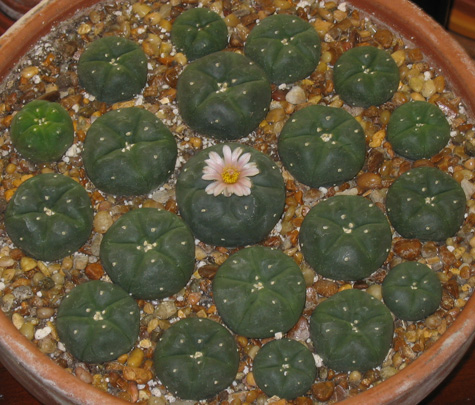Uncategorized
A Comprehensive Guide to Mescaline-Containing Cacti: Understanding Mescalina and Its Sources
Introduction
Mescaline, a powerful and ancient psychedelic compound, has intrigued and fascinated humanity for thousands of years. Known for its profound effects on perception, consciousness, and emotional states, mescaline is found in several cacti species. This guide will provide a detailed exploration of which cacti contain mescaline, the effects of mescalina, and the broader implications of these psychedelic plants.

1. What Is Mescaline?
Mescaline is a naturally occurring psychedelic alkaloid that has been used in various cultural and spiritual contexts. It belongs to a class of substances known as hallucinogens, which primarily act on serotonin receptors in the brain, leading to altered sensory perceptions, enhanced introspection, and vivid hallucinations.
1.1. Chemical Properties and Effects
Mescaline’s chemical structure is similar to other hallucinogens, such as LSD and psilocybin. It primarily affects the 5-HT2A receptor, which plays a crucial role in mood, perception, and cognition. The effects of mescaline can include:
- Visual and Auditory Hallucinations: Users often experience vivid and colorful visual distortions, as well as altered auditory perceptions.
- Altered Sense of Time and Space: Time may appear to slow down or speed up, and spatial perceptions can become distorted.
- Enhanced Emotional Experience: Mescaline can evoke strong emotions and facilitate deep introspection, leading to personal insights and spiritual experiences.
1.2. Duration and Intensity
The effects of mescaline typically last between 6 to 12 hours, depending on the dose, individual sensitivity, and the method of ingestion. The experience can be intense, and its impact on consciousness is often profound.
2. Cacti Containing Mescaline
Several cacti species contain mescaline, each with unique characteristics and varying concentrations of the compound. Here’s an overview of the primary mescaline-containing cacti:
2.1. Peyote Cactus (Lophophora williamsii)
- Description: Peyote is a small, spineless cactus that grows close to the ground. It has a distinctive appearance with a round, flattened shape and ribbed surface. Peyote typically features small, pinkish flowers and a central taproot.
- Mescaline Content: Peyote is renowned for its high mescaline concentration. It has been used for thousands of years by indigenous peoples in North America, particularly in religious and spiritual ceremonies.
- Traditional Uses: Peyote has a rich history of use among Native American tribes, who employ it in religious rituals to induce visionary experiences and spiritual insights. Its use is central to the Native American Church, which integrates peyote use into its religious practices.

2.2. San Pedro Cactus (Echinopsis pachanoi)
- Description: The San Pedro cactus is a tall, columnar cactus native to the Andes Mountains in South America. It can reach heights of up to 20 feet and has ribbed, greenish stems with small, areole-based spines.
- Mescaline Content: San Pedro contains moderate to high levels of mescaline. It is widely used in traditional Andean spiritual practices and is known for its relatively mild and manageable effects compared to Peyote.
- Traditional Uses: San Pedro has been used for over 3,000 years in Andean cultures for its psychoactive properties. It is used in ceremonies to facilitate visions, personal insight, and healing. The cactus is often consumed in the form of a brewed tea.
2.3. Peruvian Torch Cactus (Echinopsis peruviana)
- Description: The Peruvian Torch cactus is similar to the San Pedro, with a columnar growth form and ribbed, green stems. It is native to the high Andes of Peru.
- Mescaline Content: Peruvian Torch contains significant levels of mescaline, though generally less than Peyote. It is valued for its potent psychoactive effects and is used in similar contexts as San Pedro.
- Traditional Uses: Like San Pedro, the Peruvian Torch is used in Andean spiritual practices and modern exploration of consciousness. It is typically prepared as a tea or extract for consumption.
2.4. Bolivian Torch Cactus (Echinopsis lageniformis)
- Description: The Bolivian Torch cactus resembles the San Pedro and Peruvian Torch, with a columnar growth habit and ribbed, green stems. It is native to Bolivia.
- Mescaline Content: The Bolivian Torch also contains mescaline, with a concentration that can vary. It is known for its potent effects and is used similarly to the other mescaline-containing cacti.
- Traditional Uses: The Bolivian Torch is used in both traditional and modern contexts for its psychoactive properties. It is often prepared as a tea or extract for its hallucinogenic effects.
3. Mescalina: Cultural and Modern Perspectives
Mescalina has a rich cultural history and has been used in various contexts to facilitate spiritual experiences and personal insights. Understanding its role in both traditional and modern settings provides valuable insight into its significance.
3.1. Cultural Significance
- Indigenous Traditions: Mescaline-containing cacti have been integral to the spiritual and religious practices of indigenous cultures. Peyote, for example, has been used by Native American tribes in religious ceremonies for centuries. Similarly, San Pedro and other Andean cacti have been used in traditional Andean rituals.
- Shamanic Practices: In many indigenous cultures, mescaline-containing cacti are used by shamans or spiritual leaders to facilitate communication with the divine, seek guidance, and promote healing. The psychoactive effects of these cacti are believed to open pathways to spiritual realms and insights.
3.2. Modern Exploration
- Therapeutic Research: Recent interest in psychedelics has led to renewed research into the therapeutic potential of mescaline. Studies are exploring its use in treating mental health conditions, such as depression, PTSD, and anxiety. Preliminary research suggests that mescaline and other psychedelics may have significant therapeutic benefits, particularly in promoting emotional healing and personal growth.
- Personal Growth: Modern users are exploring mescaline-containing cacti for their potential to facilitate personal development and spiritual exploration. The profound experiences induced by mescaline can lead to increased self-awareness, enhanced creativity, and a deeper understanding of one’s inner self.
4. Legal and Safety Considerations
The legal status of mescaline-containing cacti varies by country and region, and safety considerations are crucial for those interested in exploring these substances.
4.1. Legal Status
- United States: Mescaline is classified as a Schedule I controlled substance under the Controlled Substances Act. This makes its use, extraction, and possession illegal. However, the cultivation of certain mescaline-containing cacti, such as San Pedro, is often allowed for ornamental purposes.
- Canada: Mescaline is also regulated under Canadian drug laws, and its use is restricted. The cultivation of cacti like San Pedro may be legal for ornamental purposes, but their psychoactive use is prohibited.
- Other Countries: Legal status varies widely. Some countries permit the cultivation and use of mescaline-containing cacti for ornamental purposes, while others have strict regulations regarding their psychoactive use.
4.2. Safety and Harm Reduction
- Dosage and Preparation: Proper dosage and preparation are essential for a safe and positive experience. Start with a lower dose to gauge individual sensitivity and ensure a safe environment for the experience. Traditional preparation methods, such as brewing tea or creating extracts, should be followed with care.
- Setting and Support: Creating a supportive and safe environment is crucial for a positive experience. Having a trusted friend or guide present can help manage the experience and provide support if needed.
5. The Future of Mescaline and Psychedelic Cacti
The exploration of mescaline and psychedelic cacti continues to evolve, with ongoing research and cultural interest shaping their future role in personal and therapeutic contexts.

5.1. Research and Development
- Clinical Trials: Ongoing research into the therapeutic potential of mescaline and other psychedelics aims to understand their effects on mental health and well-being. Clinical trials are investigating the efficacy of these substances in treating various psychological conditions.
- Cultural Reassessment: As attitudes towards psychedelics shift, there is increasing interest in re-evaluating the cultural and historical significance of mescaline-containing cacti. This reassessment may lead to greater acceptance and integration of these substances in modern spiritual and therapeutic practices.
5.2. Cultural Integration
- Integration into Modern Practices: As interest in psychedelics grows, there is a movement towards integrating mescaline and other psychedelic substances into contemporary spiritual and therapeutic practices. This includes exploring their potential benefits and incorporating traditional knowledge into modern contexts.
Conclusion
Mescaline-containing cacti, including Peyote, San Pedro, Peruvian Torch, and Bolivian Torch, offer a rich and diverse range of experiences and applications. Understanding which cacti contain mescaline, the effects of mescalina, and the cultural significance of these plants provides valuable insight into their potential. As research and cultural exploration continue to evolve, the role of mescaline-containing cacti in personal growth, spiritual exploration, and therapeutic practices remains a fascinating and dynamic field.
Whether exploring the historical uses of these cacti or delving into their modern applications, this guide serves as a comprehensive resource for understanding the profound and transformative potential of mescaline-containing cacti.
